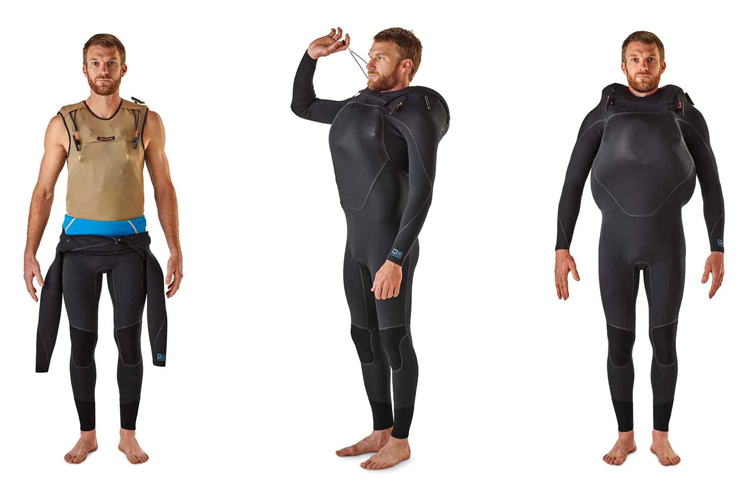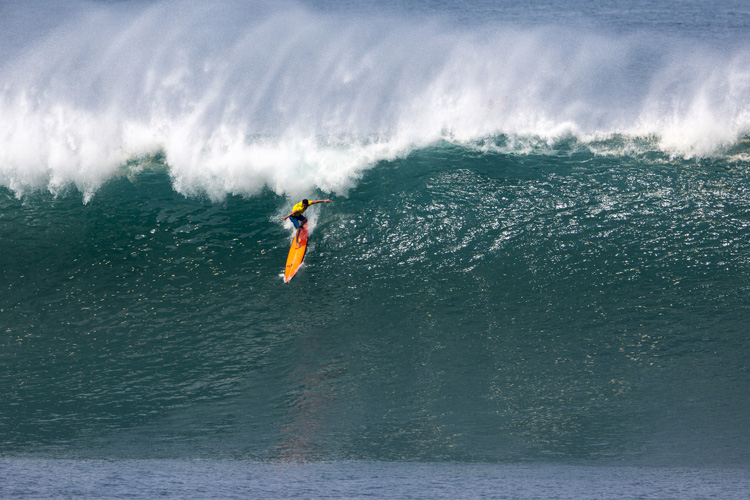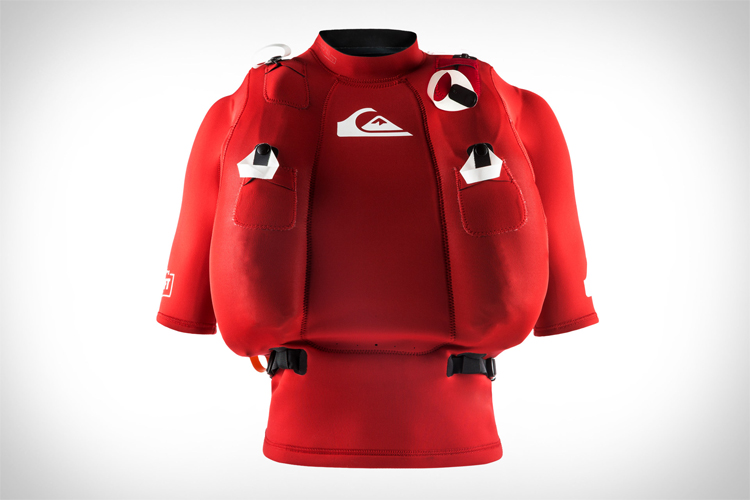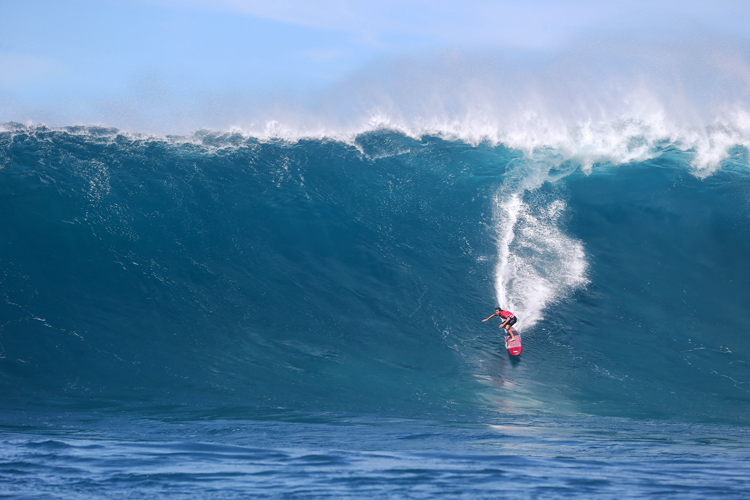In the big wave surfing arena, safety is priority number one, two, and three. And that's why inflatable life vests have become a critical item in every surfer's gear bag.
An inflatable life vest is a specialized personal flotation device (PFD) used for big-wave surfing. It can be worn over the top of a regular wetsuit but also as a standalone vest.
It's a key piece of safety equipment that has already been thoroughly tested in the most challenging surf breaks on the planet.
Surfers wearing PFDs increase their chances of surviving a two or three-wave hold-down or a life-threatening wipeout.
An inflatable life vest aims to bring the user back to the surface of the water, preferably face-up, and keep him afloat in case he blacks out and loses consciousness.
There are two types of inflatable life vest models:
- Automatic PFDs;
- Manual PFDs;
Big wave surfers do not use automatic inflatable life jackets. They use manual inflation vests activated by hand and require the surfer to pull a tab to inflate the equipment.
But even when fully inflated, these vests are not buoyant enough to aid users who are unable to save themselves and are not designed for use as impact vests.
A high-quality inflatable life vest is highly flexible, provides excellent floatability, and is 100 percent safe to use.
Zipperless models minimize damages when surfers hit the water at high speeds, for example, while performing dangerous elevator drops or cartwheeling down a giant wave face.

The Components of an Inflatable Life Vest
Inflatable life vests used in big wave surfing are often made of neoprene with a heat-sealed nylon urethane bladder inside.
The bladder is connected to four canisters of carbon dioxide (CO2) stored in a pouch on the back of the vest.
Each canister is connected to a separate pull tab located on the front of the vest.
When you pull on a tab, a nail punctures the lid of the compressed CO2 cartridge, which allows the gas to expand and fill the bladder.
This process is designed to create buoyancy to help send the surfer to the surface in heavy hold-down situations.
It also has a deflate tab located away from the inflate tabs to get rid of the air once you're safe or to dive down if necessary.

Installing the Compressed CO2 Cartridges
Each cartridge has between 25 and 38 grams of compressed CO2 inside and can be purchased at marine outlets at specialized resellers.
Before installing, inspect every cartridge and make sure there is no damage, especially to the lids.
Make sure every trigger arm on the actuators is pushed down. If they remain up, it will be impossible to activate the CO2.
Ensure none of the cords are tangled. This is another thing that can prevent you from deploying your vest when you need it.
Install the cartridges by twisting them up into the actuators and securing them into the holsters.
Put the vest on and tighten the torso straps until it feels securely fastened to your body. A snug fit will reduce the risk of the jacket shifting out of place while you surf or during a hold-down.
Some models may include an oral inflation tube. They can be inflated before each use to help the bladder adjust to its proper position.
A good inflation life vest creates buoyancy without affecting your paddling or maneuverability.

Regular Maintenance
Remember that CO2 cartridges can only be used once and must be replaced on dry land only.
Never use an inflation life vest with only one cartridge left.
Make sure to run regular tests to make sure the vest is functioning correctly.
Pull all tabs, one by one, and listen for leaks. Also, leave the vest inflated for six hours and make sure it maintains its pressure.
After each use, remove all CO2 cartridges from actuators and carefully inspect any unused cartridges for damage.
Ensure the lids are completely intact before using a new cartridge.
Rinse the entire vest, including the actuators and the dump valve. Submerge the vest in a bucket of fresh water.
After it is rinsed, allow it to air dry away from direct sunlight, then store it in a cool, dry place.
If you suspect saltwater has entered the inside of your bladder, simply inject some fresh water into the oral inflation tube.
Then, orally inflate the bladder and position the vest for the water to exit out of the oral inflation tube when pushing down on the oral inflation tip.
Once it is dried, store it for the season.
The Options on the Market
There are not many options available on the market. The best inflatable life vests for big-wave surfing are produced by surf companies.
The most popular models are Highline Airlift Vest by Quiksilver and PSI (Personal Surf Inflation) Vest by Patagonia.
They're not cheap, but they may very well save your life.
You will need formal big wave safety training or an approved certified course to be eligible to buy them.
Make no mistake. Inflatable life vests drastically mitigate the risk of death by drowning at thunderous surf breaks like Nazaré, Jaws, Mavericks, Todos Santos, Shipstern Bluff, Teahupoo, etc.
If you're stepping into the big wave realm, they will quickly become your favorite piece of equipment.
